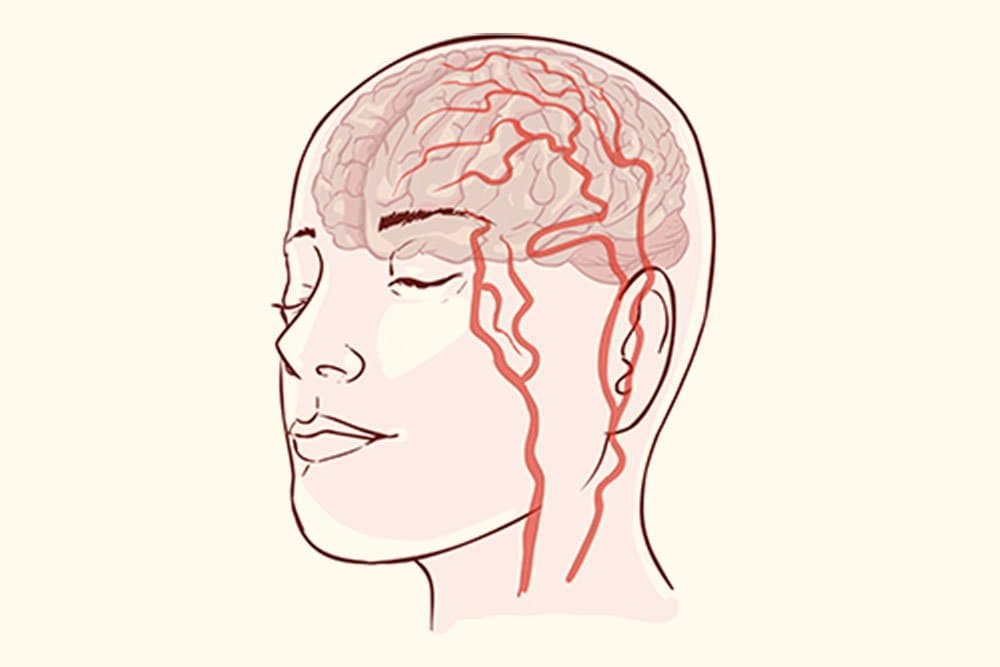Risk Factors of Brain Aneurysm
 September is National Brain Aneurysm Awareness Month. In the United States, there are an estimated six million people — one in 50 — who have an unruptured brain aneurysm. When an aneurysm ruptures (which happens about every 18 minutes in the United States) it results in a form of hemorrhagic stroke — termed "subarachnoid hemorrhage" — which is fatal in about 40 percent of cases.
September is National Brain Aneurysm Awareness Month. In the United States, there are an estimated six million people — one in 50 — who have an unruptured brain aneurysm. When an aneurysm ruptures (which happens about every 18 minutes in the United States) it results in a form of hemorrhagic stroke — termed "subarachnoid hemorrhage" — which is fatal in about 40 percent of cases.
How Aneurysms Form
Aneurysms form inside the brain when a blood vessel weakens and begins to bulge. If left untreated, pressure can build up along the vessel causing it to rupture. Brain aneurysms often arise suddenly, but there are still many early symptoms that can signal something is wrong. Extreme pain confined to one area of the head, blurred vision and neck stiffness are among the most common. Ruptured brain aneurysms may cause more abrupt and unexpected indicators that will require immediate care.
Risk Factors
Brain aneurysms are associated with some recognized risk factors, including:
- Family History of a Brain Aneurysm: While brain aneurysms can happen suddenly to anyone, those with a family history of a brain aneurysm should take extra precautionary steps. Individuals who are over the age of 25 and have a family history of aneurysms — especially first-degree relatives — are particularly at risk and should get screened with neuroimaging every five to 10 years.
- Cigarette/Drug/Alcohol Use: Smoking and illicit drug usage have shown to be factors related to both brain aneurysm formation and ruptures. This is especially true for those with a family history of aneurysms. Individuals who have quit smoking are still at risk and should consider getting screened.
- Age Factors: Those most susceptible to brain aneurysms fall between the ages of 35-60. While cerebral aneurysms can occur in children, the majority form after the age of 40.
- Gender Factors: Women also have an increased risk. For every five people who have a brain aneurysm, three of them are women. Both women and men are encouraged to get screened if they have a family history of brain aneurysms, regardless of their family member's gender.
- Having a Prior Head Injury: Traumatic head injuries, especially direct brain trauma, can lead to the formation of a cerebral aneurysm. Those who have experienced such injuries should follow up with their doctor and find out if getting screened is best for their condition.
- Hypertension or High Blood Pressure: The risk of having a brain aneurysm rupture is greatly increased in people with a history of these conditions. While high blood pressure doesn't necessarily cause brain aneurysms, heavy lifting or increased activity can cause pressure to rise, causing an existing aneurysm to burst.
CentraCare Neurosciences is a designated Comprehensive Stroke Center with a multidisciplinary team of providers, using state-of-the-art technology, who treated 1,116 stroke patients in 2019 — 48 of whom suffered from an aneurysmal subarachnoid hemorrhage. The breadth of our program includes the ability to deploy sophisticated diagnostic procedures in the evaluation of cerebral aneurysms, as well as the ability to approach aneurysm treatment through a wide variety of options.
Not all aneurysms may be preventable and not all ruptured aneurysms will be recognized prior to their rupture and subsequent stroke. However, we encourage you to be aware of the risk factors and modify those where it is possible to mitigate your risk. Seek out evaluation if you have concerns about a cerebral aneurysm. And seek immediate medical attention if you experience a sudden-onset, severe headache (typically described as the "worst headache of my life") with or without associated loss of consciousness, vomiting or neck stiffness/pain.